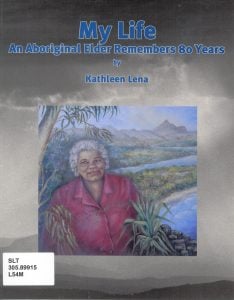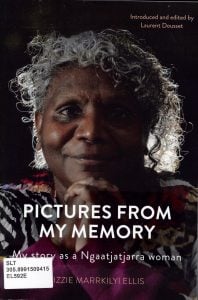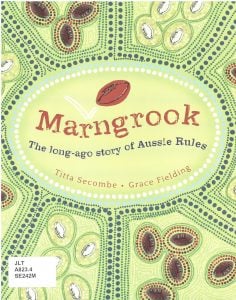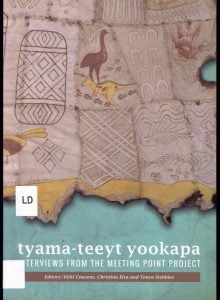‘Because of her, we can!’ is the 2018 NAIDOC week theme that acknowledges the many ways in which Aboriginal and Torres Strait Island women empower past generations and pave the way for future generations of Indigenous Australians. We’ve already shared our ebook reading suggestions, and in this second NAIDOC week installment we focus on recent books by Indigenous Australian women. This selection reflects the literary achievements of Indigenous women and their gift of empowerment to children.
Us women, our ways, our world is a collection of stories from 15 Indigenous Australian women. Some grew up in small, isolated communities and others grew up in urban locations. Each contribution offers readers different personal histories situated in the context of their deep pride in their identities as Aboriginal women: Mary Terszac and Cheryl Kickett-Tucker highlight the value of their female relationships between grandmother, mother, daughter, aunt, and sisterhood; Mary Ann Bin- Sallik examines her childhood experiences, developing socio-political awareness, her work as a nurse and later as an academic; Ambelin Kwaymullina explores the storytelling traditions of Indigenous women, from stories of dispossession to stories as creators of the future; Nerida Blair describes finding her voice as an Indigenous scholar through place, language and a model that enables a truer representation of Indigenous knowing.
In Two sisters: Ngarta and Jukuna the authors write of their individual experiences growing up on Walmajarri country in the Great Sandy Desert of Western Australia around the 1960s. Ngarta and Jukuna belong to the Walmajarri/Juwaliny language group and were amongst the last people of the southern Great Sandy Desert groups to leave Walmajarri country for the huge stations to the north. During Ngarta’s early life her family moved across country from waterhole to waterhole, sometimes breaking up in ones and twos to hunt and collect food. Ngarta loved traveling alone with her grandmother, hunting animals and gathering food as they went. Growing up she saw more and more Walmajarri people leave the Great Sandy Desert for the stations around Fitzroy Crossing. The relatives who did return warned those staying behind of two brothers notorious for preying on defenseless bands of women and children who chose to remain. First Ngarta witnessed the brothers spear her mother. Much later the brothers again surprised her family and this time killed her much loved grandmother. Later they also killed Ngarta’s brother. Terrified of the two men, Ngarta ran away and survived alone through her skills in hunting and moving from waterhole to waterhole.
Jukuna left Walmajarri country earlier than Ngarta to travel to a cattle station in Fitzroy Crossing with her new husband. On approaching Cherrabun station, Jukuna describes seeing a kartiya, or white person, for the first time. Her autobiography is given in English and Walmajarri and is considered to be the first written by a Walmajarri person in language.
My life: an Aboriginal Elder remembers 80 years is a record of Kathleen Lena’s life and family, illustrated with historic and contemporary photographs. Kathleen Lena was born in Cleveland in south-east Queensland in 1928. Her mother was a Mulanjahli woman from the Beaudesert and Logan region near Brisbane where she spent her early years with her extended family. Her earliest memories recall what is important to the very young, such as the flowers at the front of her family home in Tabooba, Queensland and the two huge Moreton Bay fig trees on either side of the yard. More memories pay tribute to the closeness of her extended family.
Pictures from my memory: my story as a Ngaatjatjarra woman by Lizzie Marrkilyi Ellis is about the complexities of living in two worlds simultaneously. Born in the bush at Warakurna in the Western Desert she heard all the stories of the old people, but she has also lived in Western society. As a child she traveled around Ngaatjatjarra country in the Rawlinson Ranges with her family, and notes how important it is for her to engage with her own life, and share moments of joy and sorrow. This is a book about a woman being proud of being Aboriginal, enjoying her attendance at white schools, the importance and complexity of kinship relationships, and her commitment to intercultural dialogue.

Why I love Australia, 2012
Why I love Australia by Bronwyn Bancroft is a picture book of diverse Australian landscapes from big rivers shaped by mystical beings to suburbia with its patchwork of rooftops. Bronywyn was born in Tenterfield northern NSW. Her father is from the Bundjalung Djanbun clan and her mother is of Scottish and Polish descent. Each double page landscape illustration includes a picture of a person holding a smoking coolamon, to pay tribute to the Ancestors of other Aboriginal traditional lands.

Remembered by heart, 2014
Bancroft’s parents married in 1949, a time of rampant racism in Australia. Her father Bill hadn’t been granted citizenship in his own land and her mother Dorothy would have been ostracised by small town prejudice. Bronwyn was nine years old when the 1967 referendum voted in favour of including Indigenous people in the census, effectively recognising Indigenous citizenship. Her experiences are recorded in her contribution, ‘Crossing the Line’, in a collection of personal experiences about being Aboriginal in Australia, Remembered by heart.

Big fella rain, 2017
Big fella rain is a picture book written by Beryl Webber of the Gunggari people of southern Queensland, and illustrated by Fern Martins descendant of the Ngarabul people of northern NSW and the Waki Waki people of the southern coastal area of Queensland. This picture book describes the northern Australian storm season that begins with lightning and thunder, how the ducks begin to move, raindrops hit the cracked earth and life returns to fill the billabongs.
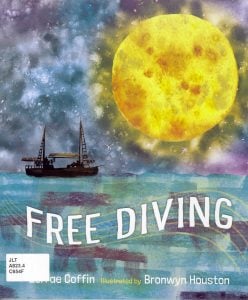
Free diving, 2017
The picture book Free diving is a song written by Lorrae Coffin, a descendant of the Nyiyaparli and Yindijibarndi people of the Pilbara in WA, to remember the Indigenous men and women who worked in the pearling industry in WA from the mid- 1800s. Beautifully illustrated by Bronwyn Houston, descendant of the Wunna Nyiyaparli people of the Pilbara, this fictional story of a young man lost at sea, touches lightly upon the past practice of forced unpaid Indigenous labour that European pearl lugger owners enforced, despite the perils of no protective clothing, decompression sickness, sharks and diving without a buddy.
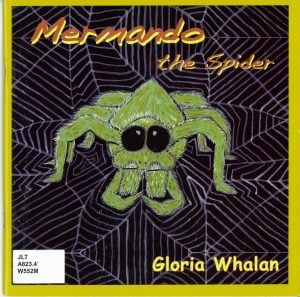
Mermando the spider, 2010
Gloria Whalan is part of the stolen generation, raised by her grandmother who found out that she is Wiradjuri when she was 49. Her picture book Mermando the spider is about a hairy spider that lived at the bottom of Grandma’s farmhouse garden. When the grandchildren visited she stopped them from thinking they should kill the spider by explaining how Mermando eats all the bad insects. The children came to look forward to seeing Mermando and other animals on the farm when they visited. Wiradjuri language words are given for keywords in the text.

Dingoes are not dogs, 2011
Illustrated by the children of Cherbourg State School Dingoes are not dogs by Dr Chris Sarra is about accepting difference and how fear is diminished by having the courage to reach out to those who are different. This picture book celebrates the commitment that Indigenous women have to pave the way for empowerment of children. Cherbourg is an Aboriginal community established in 1904 in south east Queensland. As principal from the late 1990s Sarra facilitated the implementation of a ‘Strong and Smart’ Early Years Literacy Project. This project evolved into the publishing house Budburra Books which aspires to encourage a love of literacy, learning and the arts, and continues to cultivate pride in local Indigenous culture.
Marngrook: the long ago story of Aussie Rules by Titta Secombe and illustrated by Grace Fielding tells how the Djab-Wurrung and Jardwadjali people of the Victorian Grampians region played marngrook, the game we know as Australian Rules Football, more than 150 years ago. This picture book describes how an Elder of the respective clans fashioned the skin of a ringtail possum into a marngrook, or football for children to play with.
Tyama-teeyt yookapa: interviews from the Meeting Point Project records insights on Indigenous language revival. Collected together under the editorship of Vicki Couzens, Christina Eira and Tonya Stebbins these ‘yarning’ conversations reflect the importance of revival and maintenance of traditional Indigenous languages. A selection of the interviews carried out during 2009- 2010 with 31 Aboriginal people living across four states and over 15 traditional countries, is published here. Different from linguists’ understanding of language, Indigenous communities want a working language, that exercises the right of traditional custodianship and ownership of Indigenous Australian language, culture and land.
The final word comes from Louise Phillips and Tracey Bunda whose advocacy for Indigenous stories in their 2018 ebook Research through, with and as storying is compelling.They note how stories represent possibility for unity across varied Indigenous and non-Indigenous positions while also deeply respecting the need to be separate. They say:
Stories are warming, amusing, bemusing, intriguing, heavy-hearted and so good to tell and hear. They invite us to take a moment out of constant doing, to listen and feel another’s life—to remind us we are embodied, relational beings. (p. 106)



